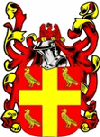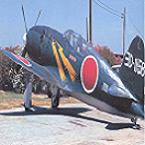Ian R
Posts: 3420
Joined: 8/1/2000
From: Cammeraygal Country
Status: offline

|
Australia's foreign policy up to 1941 was wedded to the UK. Australia never actually declared war in 1939 (or 41) - In 1939 PM Menzies solemnly announced that GB had declared war and we, therefore, were also at war.
He was voted out in August 41 and after a couple of months with Fadden ( a conservative) in the post, Curtin became prime minister. Curtin was labour party, a democratic socialist one with strong Irish Catholic roots. As a result much less wedded to the British Empire, but there was no chance of withdrawing from the war. Once the Pacific war started Curtin was more than willing to align us more closely with the US than the UK, for obvious reasons. Curtin insisted that the AIF be returned from the Middle East, a decision which proved crucial in the battles at Milne bay and on the Kokoda trail, Buna, Gona and Sanananda.
Curtin chose to take his military advice from Macarthur instead of Blamey, and after the desperate battles of the second half of 1942, when Australian (mostly) and US troops turned the IJA around in PNG, had no difficulty with the Australian Army moving into a supporting role as US troop numbers built up in SWPAC area.
If the US fights on, then so does Oz. If the US negotiated with the IJE, then so, by default, would we.
A purely military appreciation, emphasising logistic support is as follows.
As to an IJA invasion in 1942/3, the IJA would have found themselves facing a force the size of the CW 8th Army, including in that situation upwards of three fully mobilised armoured divisions and three AIF infantry divisions, perhaps one or two US motorised infantry divisions depending on when it happens, maybe more, PLUS the Militia forces - the equivalent of 5-7 further infantry divisions (but with a fair bit of MT). While these would have been "green", they did have the advantage of a lot of 40-45 year old officers and senior NCOs who were still fit and had the precious commodity of combat experience, in some cases about 3 years of it, who were well versed in the application of individual initiative in light infantry tactics.
Australian industry in 1942 was capable of producing sufficient quantities of rifles, MGs, and other infantry weapons, ammunition (in particular at a factory decentralised into the central west of NSW, way way south aand a mountain range away from the coast) and AC-1 Sentinel tanks, which whilst they were not much of a match for the European machines of the time would have dealt with the IJA's light tanks and tankettes. Again depending on timing of the imposition of any blockade, there may also have been some hundreds of Matildas, Stuarts, ad M-3 mediums available. Not sure about large calibre field artillery, but there were a lot of WW1 vintage 18lbers available (3.3 inch, 84 mm, range 10400 yards). Not sure about WW1 vintage 4.5 inch (114 mm) howitzers. The short 25lb gun was first produced in Australia (as a pack version of the famous gun howitzer for jungle use) in 1943; so availability in numbers again depends on timing and how well emergency measures worked in practice. So the artillery was comparable or better than the IJA's usual 75mm. Aircraft production was underway, as all WITPers know, but without US airpower the IJA would likely have air superiority. The only natural resource which would be problematical is oil, but such domestic production as there is was deep down in the South east where 90% of the population and industry are. And we have plenty of horses and lots of grass.
The IJN may have been able to land troops in the north, but would need to strip other areas to find sufficient troops, and further overstretch their transport capacity. Note that landing in Darwin is not much good, you go a few miles south and there is nothing there except cattle stations the size of Belgium. Its a dead end in trying to move North to South ( no railway link), and landing on the west coast is not going to be much good either. So they would have to land on the east coast where the bulk of the population is, and move south down it, but even though there is a narrow coastal plain much of the way, there are also a lot of very rugged going. So my assessment is that you would need about 20 IJA divisions (pulled from China or Manchuria), more artillery than they usually had, and tanks, a least a few regiments, to press forward, which is probably more than the IJN could supply. Which IIRC, was the IJN's message to the IJA when some planning on the subject was done in 1942, or maybe the message went the other way.
So we could keep the troops fighting, would burn everything when we retreated, blow up every bridge, smash the railway infastructure down the coast (where the IJA would get the locos and rolling stock to use it even if they repaired it is a significant question), evacuate the civilians, and leave cut off troops to fade into the hill country to wage guerilla war ( a battalion in the hills in Timor occupied the attention of an entire IJA division for about a year and then withdrew by sea) and make the IJA garrison everything.
The Brisbane line was not such a dumb idea. Professionals talk about logistics, etc.
While you could say that if the IJE was able to devote all or most of its resources to an invasion of Australia they would win out after a few years, that is not a real world scenario.
And while the 20 IJA divisions are bogged down down here, the smart strategy for the US would be to make sure enough stuff was sent here to keep those 20 divisions occupied - and cause the IJN to have to devote more resources to supplying them - while they assembled the historical fleet of Essexes, Clevelands, Fletchers et al, and ploughed a path straight through the Marshalls, Marianas, and Carolines back to the Philippines.
_____________________________
"I am Alfred"
|
 Printable Version
Printable Version













 wow! Why don'tcha shake the tree a lttle!
wow! Why don'tcha shake the tree a lttle!










 New Messages
New Messages No New Messages
No New Messages Hot Topic w/ New Messages
Hot Topic w/ New Messages Hot Topic w/o New Messages
Hot Topic w/o New Messages Locked w/ New Messages
Locked w/ New Messages Locked w/o New Messages
Locked w/o New Messages Post New Thread
Post New Thread